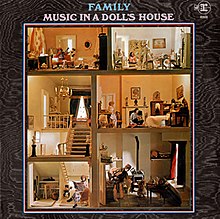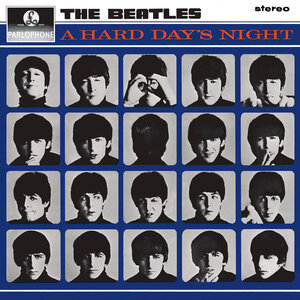
A Hard Day's Night is the third studio album by the English rock band the Beatles, released on 10 July 1964 by Parlophone, with side one containing songs from the soundtrack to their film of the same name. The American version of the album was released two weeks earlier, on 26 June 1964 by United Artists Records, with a different track listing including some from George Martin's film score. Unlike their first two albums, all 13 tracks on A Hard Day's Night were written by John Lennon and Paul McCartney.
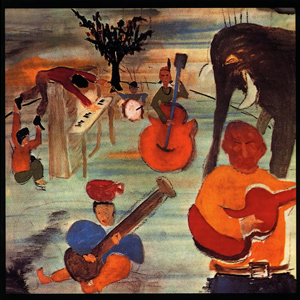
Music from Big Pink is the debut studio album by Canadian-American rock band the Band. Released on July 1, 1968, by Capitol Records, it employs a distinctive blend of country, rock, folk, classical, R&B, blues, and soul. The album's title refers to a house in West Saugerties, New York called "Big Pink", which was shared by bassist/singer Rick Danko, pianist/singer Richard Manuel and organist Garth Hudson and in which the album's music was partly composed. The album itself was recorded in studios in New York and Los Angeles in 1968, and followed the band's stint backing of Bob Dylan on his 1966 tour and time spent together in upstate New York recording material that was officially released in 1975 as The Basement Tapes, also with Dylan. The cover artwork is a painting by Dylan.

A Nice Pair is a compilation album by Pink Floyd, re-issuing their first two albums, The Piper at the Gates of Dawn and A Saucerful of Secrets in a new gatefold sleeve. The album was released in December 1973 by Harvest and Capitol in the United States and the following month in the United Kingdom by Harvest and EMI. It reached number 36 in the US Billboard album charts and was certified gold by the Recording Industry Association of America (RIAA) in March 1994.

In the Court of the Crimson King is the debut studio album by English progressive rock band King Crimson, released on 10 October 1969, by Island Records. The album is considered one of the earliest and most influential of the progressive rock genre, with the band combining musical influences that rock music was founded upon with elements of jazz, classical, and symphonic music.

Meet the Beatles! is a studio album by the English rock band the Beatles, released as their second album in the United States. It was the group's first American album to be issued by Capitol Records, on 20 January 1964 in both mono and stereo formats. It topped the popular album chart on 15 February 1964 and remained at number one for eleven weeks before being replaced by The Beatles' Second Album. The cover featured Robert Freeman's iconic portrait of the Beatles used in the United Kingdom for With the Beatles, with a blue tint added to the original stark black-and-white photograph.
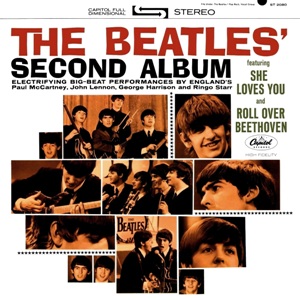
The Beatles' Second Album is the second Capitol Records album by the English rock band the Beatles, and their third album released in the United States including Introducing... The Beatles, which was issued three months earlier by Vee-Jay Records. Following its release in April 1964, The Beatles' Second Album replaced Meet the Beatles! at number 1 on the Billboard Top LPs chart in the US. The album was compiled mostly from leftover tracks from the UK album With the Beatles and the forthcoming UK Long Tall Sally EP, which are predominantly rock and roll and R&B covers, and rounded out with several Lennon-McCartney-penned non-album b-sides and the hit single "She Loves You". Among critics, it is considered the band's purest rock and roll album and praised for its soulful takes on both contemporary black music hits and original material.

Reel Music is a compilation album featuring a selection of songs by the Beatles that were featured in their films, as the title suggests. The album was released on 22 March 1982 in the United States and the following day in the United Kingdom – almost simultaneously with the theatrical re-release of the film, A Hard Day's Night, which had been "cleaned" and re-edited with stereo Dolby sound. In the US, Reel Music peaked at number 19 on Billboard's albums chart.

The Early Beatles is the Beatles' sixth album released on Capitol Records, and their eighth album overall for the American market. All eleven tracks on this album were previously issued on the Vee-Jay Records release Introducing... The Beatles, released in January, 1964. The front cover photo for this album features the same back cover photo for the British LP Beatles for Sale.
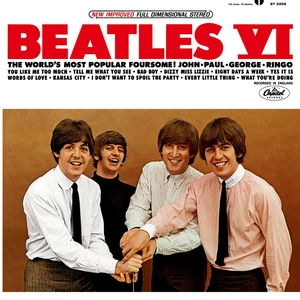
Beatles VI is the seventh Capitol Records studio album by the English rock band the Beatles in the United States and Canada. It was the ninth album released into that market in less than one and a half years. The LP was released in both mono and stereo versions.

Introducing... The Beatles is the first studio album released by the English rock band the Beatles in the United States. Originally scheduled for a July 1963 release, the LP came out on 10 January 1964, on Vee-Jay Records, ten days before Capitol's Meet the Beatles! The latter album, however, entered the U.S. album chart one week before the former. Consequently, when Meet The Beatles! peaked at No. 1 for eleven consecutive weeks, Introducing...The Beatles stalled at No. 2 where it remained for nine consecutive weeks. It was the subject of much legal wrangling, but ultimately, Vee-Jay was permitted to sell the album until late 1964, by which time it had sold more than 1.3 million copies. On 24 July 2014 the album was certified gold and platinum by the RIAA.
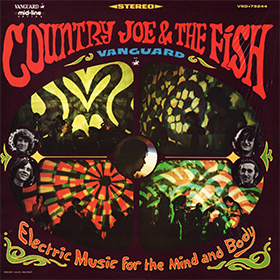
Electric Music for the Mind and Body is Country Joe and the Fish's debut album. Released in May 1967 on the Vanguard label, it was one of the first psychedelic albums to come out of the San Francisco Bay Area.

Buffalo Springfield is the debut album by the folk rock band Buffalo Springfield, released in October 1966 on Atco Records. Band members Stephen Stills and Neil Young wrote all the material on the album.

Mr. Fantasy is the debut album by English rock band Traffic, released in December 1967. The recording included group members Jim Capaldi, Steve Winwood, Chris Wood, and Dave Mason; Mason temporarily left the band shortly after the album was released. The album reached the number 16 position in the UK Albums Chart, and number 88 on the Billboard Top LPs chart in the United States.

Monk's Music is a jazz album by the Thelonious Monk Septet, which for this recording included Coleman Hawkins and John Coltrane. It was released in November 1957 through Riverside Records. The recording was made in New York City on June 26, 1957.
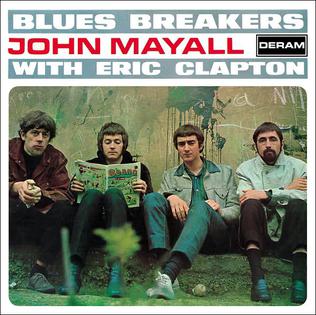
Blues Breakers, colloquially known as The Beano Album, is the debut studio album by the English blues rock band John Mayall & the Bluesbreakers, originally credited to John Mayall with Eric Clapton. Produced by Mike Vernon and released in 1966 by Decca Records (UK) and London Records (US), it pioneered a guitar-dominated blues-rock sound.
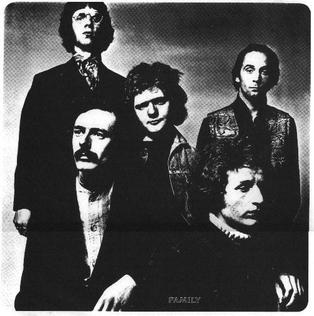
Family were an English rock band, active from late 1966 to October 1973, and again since 2013 for a series of live shows. Their style has been characterised as progressive rock, as their sound often explored other genres, incorporating elements of styles such as folk, psychedelia, acid rock, jazz fusion, and rock and roll. The band achieved recognition in the United Kingdom through their albums, club and concert tours, and appearances at festivals.
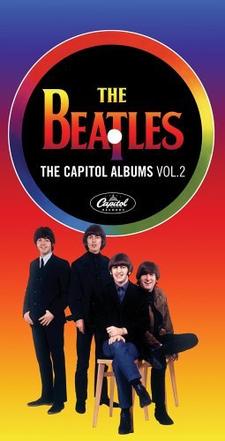
The Capitol Albums, Volume 2 is a box set compilation composed of the Beatles' 1965 American Capitol Records releases. The set, which contains stereo and mono versions of all 92 tracks, was announced on 22 March 2006.

Family Entertainment is the second album by the British progressive rock band Family, released in March 1969. The cover of the album was a takeoff from the sleeve of the Doors' second album, Strange Days, as Family admitted.
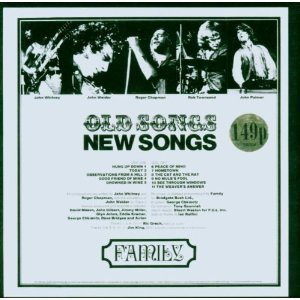
Old Songs New Songs is a budget-priced compilation album by the British progressive rock band Family, released in March 1971. The title is taken from the title of a song that appeared on the band's 1968 debut album Music in a Doll's House, although that song does not appear on this record.
Rarities is the name of two separate and unrelated compilation albums by the English rock band the Beatles. The first was released in the United Kingdom in December 1978, while the second album was issued in the United States in March 1980.
